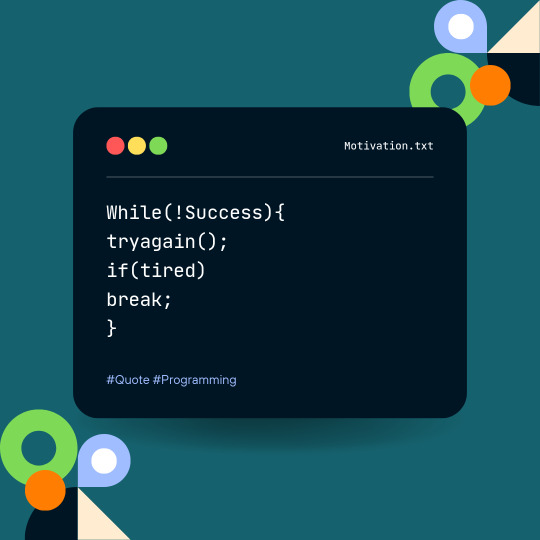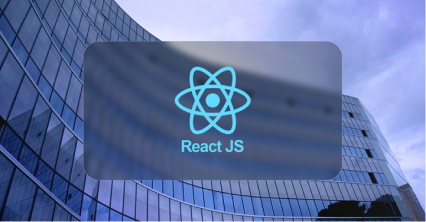#props in nested components
Explore tagged Tumblr posts
Text
hate hate hate h1-h6 elements. it should be one element and the hierarchy is just inferred from the DOM structure. if your tree is fucked that's on you.
#i have a pretty deeply nested component that needs to be h3 on one page but h4 on the other#so i can either create a new context or prop drill#🫠🫠🫠#god i hate it here
1 note
·
View note
Text
React JS
Component-Based Architecture:
React applications are built using components, which are reusable, self-contained pieces of the UI. Components can be nested, managed, and handled independently, leading to better maintainability and scalability.
JSX (JavaScript XML):
React uses JSX, a syntax extension that allows HTML to be written within JavaScript. This makes the code more readable and easier to write.
Virtual DOM:
React maintains a virtual DOM, an in-memory representation of the actual DOM. When the state of an object changes, React updates the virtual DOM and efficiently determines the minimal set of changes needed to update the real DOM, leading to performance improvements.
One-Way Data Binding:
Data flows in one direction, from parent to child components, which makes the data flow and logic easier to understand and debug.
State Management:
React components can maintain internal state, making it easy to build dynamic and interactive UIs. For more complex state management, libraries like Redux or Context API can be used.
Advantages of Using React
Performance:
Due to the virtual DOM, React minimizes direct manipulation of the DOM, resulting in better performance for dynamic applications.
Reusable Components:
Components can be reused across different parts of an application, reducing the amount of code and enhancing consistency.
Strong Community and Ecosystem:
A large community and a rich ecosystem of tools and libraries support React, making it easier to find solutions, get support, and integrate with other technologies.
SEO Friendly:
React can be rendered on the server using Node.js, making web pages more SEO-friendly compared to traditional client-side rendering.
Getting Started with React
To start building applications with React, you need to have Node.js and npm (Node Package Manager) installed. Here’s a basic setup to create a new React application:
Install Node.js and npm:
Download and install from Node.js website.
Create a New React Application:
You can use Create React App, an officially supported way to create single-page React applications with no configuration required:
npx create-react-app my-app cd my-app npm start
import React from 'react';
function Welcome(props) { return
Hello, {props.name}
; }
export default Welcome;
#React JS#Front end Developer#Advanced JavaScript#coding#html css#htmlcoding#html#css#php#website#html5 css3#software#React Training
5 notes
·
View notes
Text
React JS
Unleashing the Power of User Interfaces: A Guide to React.js
In the ever-evolving landscape of web development, creating interactive and dynamic user interfaces is crucial to delivering engaging online experiences. One technology that has risen to prominence in this domain is React.js. Developed by Facebook, React.js has transformed the way developers build web applications by providing a powerful framework for building modular and reusable UI components. In this blog post, we'll delve into the world of React.js, exploring its core concepts, benefits, and practical applications.
Understanding React.js:
At its heart, React.js is a JavaScript library that focuses on the efficient rendering of user interfaces. It employs a declarative approach to building UI components, where developers define how the interface should look at any given point in time, and React takes care of efficiently updating and rendering the UI when data changes.
Key Concepts:
Components: In React, user interfaces are constructed using components - self-contained, reusable building blocks that encapsulate both UI elements and the logic to manage their behavior. Components can be nested within each other, forming a tree-like structure that represents the entire user interface.
Virtual DOM: One of the most powerful features of React is its Virtual DOM. Rather than directly manipulating the actual DOM, React creates a lightweight virtual representation of the DOM in memory. When there are changes in the data or state of a component, React calculates the difference (also known as the "diff") between the previous and current virtual DOM states, and then applies only the necessary updates to the actual DOM. This process greatly improves performance and minimizes unnecessary re-rendering.
State and Props: State represents the dynamic data that can change within a component. Props (short for properties) are immutable data that are passed from parent to child components, allowing for dynamic content and customization.
Lifecycle Methods: React components have a lifecycle, consisting of phases from initialization to rendering, updating, and unmounting. Developers can tap into these lifecycle methods to control behavior at various points in a component's existence.
Hooks: Introduced in React 16.8, hooks are functions that allow developers to add state and lifecycle features to functional components. This enables a more concise and readable code structure, promoting the use of functional components over class components.
Benefits of Using React.js:
Modularity and Reusability: React's component-based architecture promotes modular development. Components can be reused across different parts of an application or even shared between projects, leading to more efficient development and easier maintenance.
Performance: By employing the Virtual DOM and selective rendering, React minimizes the performance overhead of constantly updating the actual DOM. This results in faster, smoother user interfaces, even for complex applications.
Community and Ecosystem: React has a vast and active community that contributes to its ecosystem. This means there are numerous libraries, tools, and resources available to enhance and streamline the development process.
SEO-Friendly: React applications can be rendered on the server side, improving search engine optimization (SEO) by providing search engines with a fully rendered HTML page.
Practical Applications:
React.js finds applications in a wide range of projects, from simple web apps to complex enterprise-level solutions. Some common use cases include:
Single-Page Applications (SPAs): React excels in building SPAs where fluid user experiences are key. Platforms like Facebook and Instagram use React to power their dynamic interfaces.
E-Commerce Websites: React's modular nature is beneficial for e-commerce sites, allowing developers to create reusable components for product listings, carts, and checkout processes.
Data Dashboards: React is suitable for building data visualization dashboards that require real-time updates and interactive charts.
Mobile Applications: React Native, an extension of React.js, is used to develop cross-platform mobile applications with a native-like experience.
In Conclusion:
React.js has revolutionized the way web applications are developed by providing a powerful set of tools for building modular, efficient, and interactive user interfaces. Its component-based architecture, Virtual DOM, and rich ecosystem make it a top choice for developers looking to create modern and engaging web experiences. Whether you're building a personal project or a complex enterprise application, React.js is a valuable technology to have in your toolkit. So, embrace the power of React.js and embark on a journey to create stunning user interfaces that captivate and delight your audience.
6 notes
·
View notes
Text
Context API vs. Redux: Which One Should You Choose?

State management is one of the most critical aspects of React development. As an application grows, handling state efficiently becomes a challenge. Two popular solutions, Context API and Redux, offer different ways to manage and share state across components. While both are widely used, understanding their differences will help you choose the right tool for your project.
Understanding Context API
The Context API is a built-in feature in React that enables components to share state without prop drilling. Instead of manually passing props through every level of the component tree, it allows a Provider component to wrap around sections of an application, making state available to any child component that needs it.
Why Developers Love Context API
One of the biggest advantages of Context API is that it eliminates prop drilling, making it easier to pass data across deeply nested components. This is particularly useful in scenarios where multiple components need access to the same data, such as theme settings or user authentication status.
Moreover, Context API is lightweight and does not require additional libraries. This makes it an excellent choice for small to medium-sized applications that don’t require extensive state management.
However, Context API has limitations when dealing with frequent state updates. Every time the context value changes, all components consuming that context re-render, which can lead to performance issues if not managed properly.
Diving Into Redux

Redux, on the other hand, is an independent state management library that follows a predictable unidirectional data flow. It introduces a single source of truth, meaning that all state is stored in a central location and can only be modified through actions and reducers.
Why Redux is Preferred for Large Applications
Redux shines in large-scale applications where managing global state efficiently is crucial. It provides strict state management, which ensures that data updates occur in a controlled and predictable manner.
One of its key strengths is middleware support. Libraries like Redux Thunk and Redux Saga allow developers to handle asynchronous operations, such as API calls, in an organized manner. This is particularly useful in applications that require complex side effects or rely heavily on asynchronous data fetching.
Additionally, Redux comes with powerful debugging tools like Redux DevTools, which enable developers to track every state change, rewind actions, and inspect state mutations in real time.
However, Redux does require more boilerplate code compared to Context API. Setting up actions, reducers, and stores adds complexity, which can be overwhelming for beginners or for projects where state management is relatively simple.
Comparing Context API and Redux
When deciding between Context API and Redux, it's important to consider key factors such as setup complexity, performance, scalability, and debugging support.
Setup Complexity – Context API is straightforward to implement since it is built into React. Redux, on the other hand, requires setting up a store, actions, and reducers, making it more complex to integrate.
Performance – While Context API reduces prop drilling, it can cause unnecessary re-renders when state updates frequently. Redux is optimized for performance since state updates happen in a structured way using reducers and selectors.
Scalability – Context API works well for small to medium-sized applications but may struggle as state management becomes more intricate. Redux is designed for large applications where maintaining a global state efficiently is essential.
Debugging – Redux provides advanced debugging tools that allow developers to inspect and track state changes. Context API, in contrast, relies on React DevTools, which offers limited debugging capabilities compared to Redux DevTools.
Middleware Support – Redux supports middleware solutions that help manage asynchronous operations, such as API requests or side effects. Context API does not have built-in middleware support, making Redux a better choice for handling complex asynchronous tasks.
When Should You Use Context API?
Context API is a great choice if:
Your application has a simple or moderate state management requirement.
You want to avoid prop drilling without adding external dependencies.
Your project does not require middleware for handling asynchronous actions.
You are working on a small app and need a lightweight state-sharing solution.
When Should You Use Redux?
Redux is the better choice when:
Your application involves complex state management with multiple components depending on shared state.
You need to handle asynchronous operations like fetching data from APIs.
You want structured state updates and debugging tools to track changes efficiently.
Your project is large and requires a scalable state management solution with middleware support.
Final Thoughts: Which One is Right for You?
Both Context API and Redux are powerful tools for state management, but the choice depends on your project’s needs. If you’re building a small to medium-sized application and need a quick, lightweight solution, Context API is the way to go. However, if your project requires scalability, middleware, and advanced debugging tools, Redux will be the better option.
State management is a key factor in React applications, and choosing the right tool will ensure better maintainability and performance in the long run. Want to explore more? Check out the in-depth guide on Context API vs. Redux for a deeper comparison!
0 notes
Text
Handling Props and Prop Drilling in React
React is turning into a popular choice for developers due to its component-based architecture and efficient state management. One of the core concepts in React is props (short for properties), which facilitate the passing of data between components. However, as applications grow, managing props can become complex, leading to a common issue known as prop drilling. In this blog, we will explore how to handle props efficiently in React and minimise the impact of prop drilling.
Understanding Props in React
In React, Props are used to pass data to a child component from a parent component. They are immutable, meaning that once passed, they cannot be modified by the child component. Props help in maintaining a unidirectional data flow, which is crucial for predictable application behavior.
For instance, if you are developing a dashboard in a Full-Stack Developer Course, you might need to pass user data from a parent component to various child components. Using props, you can seamlessly share this data without duplicating logic across multiple components.
What is Prop Drilling?
As applications scale, certain components may need access to data that is stored several levels above in the component hierarchy. When data is passed through multiple intermediate components just to reach a deeply nested component, this is known as prop drilling.
Example Scenario
Imagine a scenario in which a Full-Stack Developer Course in Hyderabad application consists of a parent component holding a user’s profile details. If a deeply nested component, such as a settings page, needs access to the user’s name, the data must be passed through multiple intermediary components, even if they don’t need it themselves. This unnecessary prop forwarding results in cluttered code and reduces maintainability.
How to Handle Prop Drilling Effectively?
To avoid unnecessary prop drilling, developers can implement various techniques to manage state efficiently in React applications. Below are some of the best approaches:
1. Using React Context API
The React Context API is a built-in solution for managing global state and avoiding excessive prop drilling. Instead of passing props manually through multiple layers, you can wrap components in a Context Provider, making data accessible from any component within the provider’s scope.
2. Leveraging State Management Libraries
For larger applications, using state management libraries like Redux, Zustand, or Recoil can help manage state globally without the need to pass props explicitly. These libraries store data in a central location, allowing components to access it directly.
3. Component Composition
Instead of deeply nesting components, structuring components efficiently can help reduce the need for excessive prop passing. Breaking down components into reusable and independent modules improves readability and maintainability.
4. Using Custom Hooks
Custom hooks can encapsulate logic and state management, allowing components to share state without prop drilling. This approach helps keep components cleaner and avoids unnecessary re-renders.
Conclusion
Handling props effectively is crucial for building scalable React applications. While props are essential for data transfer, excessive prop drilling can lead to code complexity and maintenance issues. By using techniques such as the React Context API, state management libraries, custom hooks, and better component composition, developers can optimise their applications and improve efficiency.
At ExcelR, we cover advanced React concepts, including props, state management, and optimising performance, in our Full-Stack Developer Course. If you’re looking for a Full-Stack Developer Course in Hyderabad, ExcelR provides industry-focused training to help you master React and other cutting-edge technologies.
Mastering React’s data flow management will empower you to build seamless, maintainable, and high-performing applications!
Contact Us:
Name: ExcelR - Full Stack Developer Course in Hyderabad
Address: Unispace Building, 4th-floor Plot No.47 48,49, 2, Street Number 1, Patrika Nagar, Madhapur, Hyderabad, Telangana 500081
Phone: 087924 83183
0 notes
Text
The Ultimate Guide to a React JS Course

With the growing demand for dynamic web applications, React.js has become one of the most sought-after JavaScript libraries for building user interfaces. Whether you are a beginner or an experienced developer looking to expand your skill set, enrolling in a React.js course can be a game-changer. This guide will provide a comprehensive overview of what a React.js course entails and why learning React can elevate your career.
What is React.js?
React.js is an open-source JavaScript library developed by Facebook for building interactive and high-performance user interfaces, especially for single-page applications (SPAs). It allows developers to create reusable UI components, manage application state efficiently, and ensure a seamless user experience.
Why Learn React.js?
React.js is widely used in the industry due to its numerous advantages:
Component-Based Architecture – React follows a modular approach, making code more reusable and maintainable.
Virtual DOM – React updates only the necessary parts of the UI, resulting in improved performance and faster rendering.
Strong Community Support – React has extensive documentation, third-party libraries, and active developer support.
Demand in the Job Market – React is a popular skill among employers, opening doors to high-paying job opportunities.
Flexibility – React can be used for web applications, mobile applications (React Native), and even desktop applications.
Key Topics Covered in a React.js Course
A React.js course typically covers the following essential concepts:
Fundamentals of React.js
Introduction to React.js and its ecosystem
Setting up a development environment
Understanding JSX (JavaScript XML)
Components, Props, and State Management
Handling Events and Lifecycle Methods
Event Handling in React
Understanding Functional and Class Components
React Component Lifecycle Methods
State Management in React
Using React Hooks (useState, useEffect, useContext)
State lifting and prop drilling
Introduction to Redux for global state management
Context API for managing state without Redux
React Routing and Navigation
React Router for navigation
Dynamic routing and nested routes
Protected routes and authentication
Working with APIs and Asynchronous Operations
Fetching data with Fetch API and Axios
Handling Promises and Async/Await
Managing API responses and error handling
Advanced React Concepts
Performance optimization with React.memo and useMemo
Lazy loading and code splitting
Higher-Order Components (HOC) and Render Props
Testing in React
Introduction to Jest and React Testing Library
Writing unit and integration tests
Debugging and handling errors
Deployment and Best Practices
Building and optimizing production-ready React applications
Hosting React applications using Netlify, Vercel, and Firebase
Continuous Integration/Continuous Deployment (CI/CD) workflows
Who Should Enroll in a React.js Course?
A React.js course is suitable for:
Beginners in Web Development – Those looking to start their journey in frontend development.
Frontend Developers – Developers familiar with JavaScript who want to specialize in React.
Backend Developers – Those who wish to learn frontend technologies to become Full Stack Developers.
Entrepreneurs & Freelancers – Individuals looking to build dynamic web applications efficiently.
Students & Career Changers – Those seeking a career in web development with in-demand skills.
How to Choose the Right React.js Course?
Take into account the following elements when choosing a React.js course:
Course Curriculum – Ensure it covers both fundamentals and advanced topics.
Hands-on Projects – Look for a course that includes real-world projects and practical applications.
Instructor Expertise – Check if the instructor has industry experience and strong teaching skills.
Certification & Job Support – Some courses offer certification and career assistance, which can be beneficial.
Flexibility – Online, part-time, or full-time options should fit your schedule.
Career Opportunities After Learning React.js
After completing a React.js course, you can explore various job roles, such as:
React Developer – Specializing in building React applications.
Frontend Developer – Working with UI/UX and JavaScript frameworks.
Full Stack Developer - This role combines backend technologies like Node.js with React.J.S.
Software Engineer – Developing scalable web applications.
Freelance Developer – Building applications for clients or personal projects.
Conclusion
A React.js course is an excellent investment for anyone looking to master modern web development. By learning React, you gain the ability to build fast, scalable, and maintainable applications that are widely used across industries. Whether you are a beginner or an experienced developer, React skills can help you land high-paying jobs and grow your career.
Transform your career with React Training in Marathahalli, offered by Infocampus. This comprehensive course is designed to equip you with the essential skills needed to excel in the fast-paced world of web development. Master the powerful React framework and learn how to build dynamic, high-performance applications that stand out. For more details Call: 8884166608 or 9740557058
Visit: https://infocampus.co.in/reactjs-training-in-marathahalli-bangalore.html
0 notes
Text
Enhancing Web Performance with Advanced React: Skills Every Developer Needs
React has revolutionized front-end development, enabling developers to build dynamic, responsive interfaces. However, as applications grow, so do their performance demands. Advanced React training provides developers with the skills and tools to optimize their applications, ensuring efficiency and responsiveness, even under heavy loads. Knowing which essential performance-enhancing techniques in React that every developer should master can help them deliver a seamless user experience.
Optimizing Component Rendering with React.memo
To boost performance, controlling component re-rendering is crucial. By default, React re-renders a component whenever its parent component updates. React’s React.memo function helps manage this by memoizing a component’s output, causing it to re-render only when props change. This technique is especially useful in applications with nested components or frequent updates, as it cuts down on unnecessary renders, easing the browser’s workload. Mastering React.memo helps developers handle large datasets and complex UI interactions more smoothly.
Leveraging Lazy Loading for Efficient Resource Management
Applications with numerous components and resources often load slowly, affecting user experience. Lazy loading with React.lazy defers the loading of components until needed, improving initial load time by prioritizing essential interface parts. Used with React’s Suspense, lazy loading enhances responsiveness in data-heavy applications by managing resources effectively. Learning to implement lazy loading allows developers to create faster-loading applications that only fetch what’s necessary in real-time, improving performance.
Minimizing State-Related Re-Renders with useCallback and useMemo
State changes in React can lead to re-renders that may slow down applications, particularly when multiple interactive components are present. The useCallback and useMemo hooks control how functions and computed values are reused across renders, optimizing performance. useCallback memoizes functions to avoid re-creation, and useMemo memoizes computed values to prevent redundant calculations. These hooks are vital for managing resource-intensive functions, helping keep applications efficient and responsive.
Reducing Load with Code Splitting
Code splitting allows developers to break application code into smaller bundles, loading only essential parts upfront to enhance performance. This technique, often implemented with Webpack, delays loading non-critical code, improving initial load times. For applications with large codebases or media-rich content, code splitting conserves resources and enhances user experience. Advanced React training covers code-splitting strategies that enable developers to build scalable applications without sacrificing performance.
Monitoring and Profiling with React DevTools Profiler
Effective performance optimization requires real-time insights. The React DevTools Profiler lets developers track component render times, pinpointing slow re-renders and potential bottlenecks. By diagnosing issues based on render patterns, the Profiler helps developers make targeted improvements. This tool is essential for isolating and troubleshooting performance issues that can be challenging to identify, ensuring optimized performance at every stage of development.
Building High-Performance React Applications for Seamless Experience
Optimizing React applications goes beyond basic React skills. Learning and understanding techniques like React.memo, lazy loading, state management hooks, code splitting, and profiling with React DevTools equips developers to build efficient, high-performance applications. Web Age Solutions’ advanced React training empowers developers with these skills, helping them create scalable applications that meet the demands of today’s user expectations.
For more information visit: https://www.webagesolutions.com/courses/react-training
0 notes
Text
Towards "Blackhand Servitor" sampler, the Unionized Vision Quest, '(thread 16^12) '(article 0x29)







Follow-up article to the following two:
Kate: Even the black sun shall set one day. And as we shall rejoice the several eons we came to experience together, am I right to think such Ava? Ava: Sure thing Kate, I agree.
Components
Empathic mutualism, esoteric empowerment, systemic renewal, queer-ness & transgender & neurodivergence issues, data privacy, AI automation done well, morphological freedoms, communion with nature, sapient machine rights, grounded optimism, Turtle Island-themed, seventies cassette retrofuturism aesthetic, LISP code poetry & immersive tech props, data recovery & archival processes, self-discovery & insightful outer journey, copyleft publishing license & production technologies, multilingual / multimedia exports, affirmation therapy, mind synthesis / scanning;
Chronokinesis, True Polymorphy, meta? Retrocognition, distant far far away future dream(s?), Pinegroove as Mascouche+Rostock-like locations, lore-accurate branding?, historical tech remastered, tramway sequence, symbolic computation, touchscreen PDAs, expert system, Turbochannel Eurocard systems, Soyuzmultfilm animated films web hosting webring, lucid dreams, vivid daydreams, manifestation games, benevolent use of power, spiritual awakening?, societal harmony & social cohesion, humane transparency, RTTY shortwave broadcasting data, psyche agent archival as pseudo-afterlife, ancestor blessings, written bronze scroll records, spell contracts, preservation of knowledge, communal insights from humble tribes, shamans, oracles, priests, monks, clerks, foresight, memory rituals, bulletin board systems, tables, nesting spreadsheets, calendars, newer rituals, macrocosms and paracosms, libraries, changelings, vocal tales, urban legends, rural stories;
Trenchbroom, Blender 3.6+, Krita, Inkscape, QOwnNotes, LibreOffice, Kate, Godot 4 stable branch, Emacs, A2 Bluebottle Oberron, OpenDylan, Smalltalk, Fish, Tuxedo Computers, Pine64, Librem 5?, Elisa, Itch.io as an app, nsCDE, KDE e.v , FSF as GLOSS Foundation, Symbolics as Utalics, DEC as Pflaumen, PC/M as Magna Charter Macrotronics, IBM as EBM, Sun Microsystems as Luanti *, DuckDuckGo, SearX, Startpage, Gog Galaxy, Lutris, Proton, Wine, FreeBASIC?, ObjectREXX, Es, Acme, tcsh, musl, Okteta, K3B, GNU core utils, Bel, Arc, SimH, ...
16^12 - Angora history path and "androids congress worldwide project" context;
Nil Blackhand as camera POV, Kate Ker (INTJ autistic erudite historian transfem geocenter faction) + Ava Booksword (ENFP blonde social assistance worker synthetic android woman of syndicalist faction) modular intrigue storylets pathway;
Ana - Kata connection (focused on the time interpretation...), ocean of clades, afterlives, sentient / divine cosmic tree, living sapient cosmos ecosystems theory, black hand of history, mourning + celebrating the dead, cycles of life death and renewal, intrigue threads, manias & archaeology (mummy, tombs...), sophont nuances, dynastic lineages, embracers of change and luddites, improve the world, "become the revolution you seek in life", systemically parallel lives' overlaps, systemic progress, editing your reality and archiving individuals through divine software, traditions, pattern recognition, manifestation journeys, mutual guidance, giving and sharing, globalization, radio-pathy, van crawl, vision quests, romances, passions, empathies, special interests & other parallel expression idioms;
Shoshona, the black Angora fem housecat;
Pohakantenna (Shoshones' own contemporary religion?), Calvinism/Arianism as Occitan Baha'i dialect;
Utchewn conlang (Numic-derived language) with Blackfoot, Coast Salish & Iranian influences?;
(Shoshone Union's) Unionists (Republicans, Liberty, Democrats) vs Progressives caucuses (Syndicalists, Green/Georgism/Geocenter, Harmony);






0 notes
Text
Imagine this: You’re deep in your React project, trying to write code that not only works but shines. You want to be efficient, clean, and—let’s be honest—avoid as many headaches as possible. You open up your trusty VS Code editor, but it feels like something’s missing. What if there were a few secret weapons that could transform your workflow?
Well, there are! Here are five essential VS Code extensions that will not only save you time but elevate your entire React development experience.
### 1. **ES7+ React/Redux/React-Native snippets**
We’ve all been there—writing out the same lines of boilerplate code over and over again. It’s tedious and eats up precious time. This is where **ES7+ React/Redux/React-Native snippets** come to the rescue. Imagine typing just a few letters and having your entire component structure, Redux setup, or even imports instantly appear. It’s like having a personal assistant for your code.
Every time you need to create a functional component or import a hook, this extension swoops in, saving you from the repetitive grunt work. And that’s not all—it covers Redux and React Native too. For any React developer, this one’s a game changer.
### 2. **Prettier - Code formatter**
Let’s face it, no matter how great of a coder you are, your code can sometimes look like a hot mess. That's where **Prettier** steps in. This tool ensures your code is consistently formatted across your entire project—no more arguing over tabs vs. spaces or forgetting to add a semi-colon.
Once Prettier is installed, it becomes your silent partner. You save a file, and boom, your code looks neat, clean, and uniform. It’s like having a professional cleaner for your messy codebase, leaving everything polished and tidy. And who doesn’t want that?
### 3. **ESLint**
We all make mistakes, especially when working on complex React apps. Sometimes it's a missing import, other times it’s a forgotten prop. **ESLint** is like your personal code guardian, always watching out for potential issues and best practices.
As you type, ESLint flags errors, warnings, and areas where you might not be following the best standards. Instead of tracking down errors after running your code, you’ll catch them in real time. It’s like having a safety net under your code at all times.
### 4. **Auto Rename Tag**
If you've ever worked with a deeply nested JSX structure, you know the frustration of changing a tag name, only to forget to update its closing pair. Cue the errors! With **Auto Rename Tag**, that’s a thing of the past.
This extension automatically updates both the opening and closing tags in your JSX components. You change one, and the other follows suit. It’s a small feature, but it makes a huge difference when working on large components. Suddenly, editing JSX feels smoother, like a well-oiled machine.
### 5. **GitLens — Git supercharged**
We all know Git is powerful, but sometimes it feels like using a hammer when you really need a fine brush. That’s where **GitLens** comes in—it supercharges your Git experience in VS Code. Ever wondered who wrote a particular line of code or when a change was made? GitLens shows you everything with just a hover.
It doesn’t stop there. GitLens also lets you explore your project’s Git history, navigate through commits, and visualize changes over time. It’s like having X-ray vision for your repository, helping you understand the story behind the code.
### Conclusion
With these five VS Code extensions, your React development process will feel smoother, faster, and more enjoyable. Whether it's auto-generating boilerplate code, keeping your formatting consistent, or helping you stay on top of Git history, each extension brings something valuable to the table.
So, what are you waiting for? Go ahead, install these extensions, and watch as your coding efficiency skyrockets. Happy coding!
#Hashtags:
#ReactJS #JavaScript #WebDevelopment #VScode #Programming #FrontendDevelopment #CodeTips #ProductivityHacks #Tech #SoftwareEngineering

1 note
·
View note
Text
React Router Installation and Configuration
A Comprehensive Guide to React Router: Installation and Configuration
React Router is an essential library for creating dynamic and navigable single-page applications (SPAs) in React. It enables developers to map different URLs to specific components, allowing users to navigate between pages without the need to reload the entire application. In this article, we will cover the installation and basic configuration of React Router, setting you up to create efficient and user-friendly web applications.
1. Why Use React Router?
React Router is widely used in React applications due to its flexibility and powerful features. It allows you to:
Manage Navigation: Seamlessly handle navigation between different components or pages.
Dynamic Routing: Create dynamic routes that respond to user inputs or interactions.
Nested Routes: Organize your application with nested routes, allowing complex UI structures.
Easy Redirection: Implement redirections and conditional rendering based on user actions or authentication status.
2. Installation of React Router
To start using React Router, you first need to install it. React Router has different packages for web and native applications. For web applications, you'll use react-router-dom. Follow these steps to install React Router in your React project:
Install React Router: Open your terminal in the root directory of your React project and run the following command:
npm install react-router-dom
Or if you're using Yarn: yarn add react-router-dom
Update Your React Project: Ensure that your React project is up-to-date with the latest versions of React and React DOM to avoid any compatibility issues.
3. Basic Configuration of React Router
Once installed, you can configure React Router in your application. Here’s how you can set up basic routing:
Import BrowserRouter: In your index.js or App.js file, import BrowserRouter from react-router-dom. This component wraps your entire application and enables routing.
import { BrowserRouter as Router } from 'react-router-dom';
Create Routes: Define your routes within the Router component using Route components. Each Route specifies a path and the component that should render when the path matches the URL.
import { Route, Switch } from 'react-router-dom'; import Home from './components/Home'; import About from './components/About'; function App() { return ( <Router> <Switch> <Route exact path="/" component={Home} /> <Route path="/about" component={About} /> </Switch> </Router> ); }
<Switch>: Ensures that only one route is rendered at a time.
<Route>: Defines individual routes; the exact prop ensures the route only matches the specified path exactly.
Linking Between Routes: To navigate between different routes, use the Link component from react-router-dom instead of traditional anchor tags.
import { Link } from 'react-router-dom'; function Navbar() { return ( <nav> <Link to="/">Home</Link> <Link to="/about">About</Link> </nav> ); }
4. Advanced Configuration
React Router offers advanced configurations, such as nested routes, route parameters, and programmatic navigation.
Nested Routes: To create nested routes, simply nest Route components within each other.
Route Parameters: Use parameters in paths to capture dynamic values from the URL.
Programmatic Navigation: Use the useHistory or useNavigate hooks to navigate programmatically within your components.
5. Conclusion
React Router is a robust tool for managing navigation in React applications. With simple installation and configuration, you can create a fully navigable single-page application. By understanding the basics of routing and how to implement them, you can enhance the user experience and create more dynamic web applications. As you become more familiar with React Router, you can explore its advanced features to further optimize your application’s navigation.
#reactjscourse#job support#react js online training#placement service#reactjs#reactnativecourse#web development#web design
0 notes
Text
Career Benefits of Learning React JS Course in Rohini

In the ever-evolving landscape of web development, React JS has emerged as a cornerstone technology, revolutionizing how developers build interactive user interfaces. Whether you are a seasoned developer looking to expand your skill set or a newcomer aiming to enter the field of front-end development, mastering React JS opens a gateway to creating robust, efficient, and scalable web applications.
What is React JS?
React JS, developed and maintained by Facebook, is an open-source JavaScript library designed for building user interfaces, particularly for single-page applications where data can change over time without reloading the page. What sets React apart is its component-based architecture, which promotes reusability, modularity, and ease of maintenance in large-scale projects.
Why Learn React JS?
Popularity and Demand: React JS has gained immense popularity among developers and companies alike due to its efficiency and flexibility. Many tech giants like Facebook, Instagram, Netflix, and Airbnb utilize React JS, ensuring a strong demand for React developers in the job market.
Component-Based Architecture: React’s component-based approach allows developers to break down complex UIs into smaller, reusable pieces, making code easier to understand, debug, and maintain.
Virtual DOM: React’s use of Virtual DOM (Document Object Model) enables efficient updates to the UI by selectively rendering only the components that have changed, rather than re-rendering the entire page. This results in improved performance and a smoother user experience.
React Native: With React Native, developers can leverage their React JS skills to build native mobile applications for both iOS and Android platforms, further expanding career opportunities.
Strong Ecosystem: React JS has a vast ecosystem of libraries, tools, and community support, offering solutions for routing, state management, testing, and more, thereby enhancing productivity and development efficiency.
Join our React JS Course in Rohini for hands-on learning in component-based architecture, state management, and building dynamic web applications. Kickstart your career in modern front-end development today!"
React JS Course in Rohini: What to Expect
Located in the heart of Delhi, Rohini is a vibrant hub for education and technology. The React JS course offered here is tailored to equip participants with comprehensive knowledge and hands-on experience necessary to excel in modern web development.
Curriculum Overview
Introduction to React JS
Understanding the fundamentals of React JS
Setting up a React development environment
Creating your first React application
Components and Props
Exploring React components and their lifecycle
Passing data to components using props
Handling events and forms in React
State Management
Managing component state with useState and useEffect hooks
Lift state up in React for shared data
Implementing controlled components and handling forms
React Router
Implementing navigation and routing in React applications
Creating dynamic routes and handling parameters
Nested routing and authentication flows
Advanced Topics
Context API for managing global state
Using Redux for predictable state management
Best practices for optimizing React applications
Building Real-World Applications
Applying learned concepts to develop practical projects
Integrating APIs and handling asynchronous operations
Deploying React applications to production
Teaching Methodology
The React JS course in Rohini adopts a hands-on approach, combining theoretical knowledge with practical implementation. Participants engage in coding exercises, assignments, and real-world projects to reinforce learning and gain proficiency in React development.
Interactive Sessions: Instructor-led sessions cover each topic comprehensively, with opportunities for Q&A to clarify doubts and enhance understanding.
Project-Based Learning: Participants work on guided projects throughout the course, applying concepts learned to build interactive web applications from scratch.
Collaborative Environment: Peer-to-peer learning and collaboration are encouraged through group projects and code reviews, fostering teamwork and communication skills.
Industry-Relevant Insights: Guest lectures by industry experts provide insights into current trends, best practices, and career pathways in React JS development.
Career Opportunities
Upon completing the React JS course in Rohini, participants are well-equipped to pursue various roles in the tech industry:
Front-End Developer: Designing and developing user interfaces using React JS.
UI/UX Engineer: Creating intuitive and visually appealing interfaces based on user-centric design principles.
React Native Developer: Building cross-platform mobile applications using React Native.
Full-Stack Developer: Integrating React JS with backend technologies to develop end-to-end web solutions.
Conclusion
Mastering React JS is not just about learning a framework; it’s about acquiring a versatile skill set that empowers you to innovate and build next-generation web applications. The React JS course in Rohini offers a structured learning path, expert guidance, and practical experience necessary to excel in this dynamic field. Whether you’re aiming to advance your career or embark on a new one, investing in React JS education is a step towards becoming a proficient and sought-after web developer in today’s competitive tech industry.
Enroll today, and embark on a journey to unleash your potential in React JS development. Discover the power of React and shape the future of web interfaces with knowledge and skills gained from the React JS course in Rohini.
0 notes
Text
Advanced Techniques for State Management in React: Redux vs. Context API

Introduction State management is a crucial aspect of building robust and scalable React applications. Two popular approaches for managing state in React are Redux and the Context API. In this article, we will delve into advanced techniques for state management using Redux and the Context API, comparing their strengths, weaknesses, and best use cases to help you make informed decisions when choosing the right approach for your project.
Redux: A Predictable State Container Redux is a powerful state management library that provides a predictable and centralized way to manage the state of your application. Key features of Redux include:
Single Source of Truth: Redux stores the entire state of your application in a single immutable object, making it easier to manage and debug. Unidirectional Data Flow: Actions are dispatched to update the state, following a strict unidirectional data flow pattern. Middleware Support: Redux allows you to apply middleware for handling asynchronous actions, logging, and more. DevTools: Redux DevTools provide powerful debugging capabilities, allowing you to inspect and time-travel through your application’s state changes.
Context API: Built-in State Management in React The Context API is a feature introduced in React that allows you to pass data through the component tree without having to pass props down manually at every level. Key aspects of the Context API include:
Provider-Consumer Pattern: The Context API uses a provider-consumer pattern to share data across components without prop drilling. Simpler Setup: Compared to Redux, the Context API requires less boilerplate code and setup, making it easier to implement for smaller applications. Lightweight: For simpler state management needs or when Redux might be overkill, the Context API provides a lightweight alternative.
Choosing the Right Approach When deciding between Redux and the Context API for state management in your React application, consider the following factors:
Complexity: Redux is well-suited for complex applications with a large state that requires predictable updates. The Context API is more suitable for simpler state management needs. Scalability: Redux’s centralized store and strict data flow make it easier to scale and maintain larger applications. The Context API may lead to performance issues with deeply nested components. Developer Experience: Redux’s debugging tools and middleware support provide a robust developer experience. The Context API offers a simpler setup but may lack advanced debugging capabilities.
Conclusion Both Redux and the Context API offer powerful solutions for state management in React, each with its own strengths and use cases. By understanding the advanced techniques and considerations for using Redux and the Context API, you can make informed decisions when architecting your React applications. Whether you choose the predictability of Redux or the simplicity of the Context API, mastering state management is essential for building efficient and maintainable React applications. For businesses looking to optimize the navigation and user experience of their React applications, partnering with a reputable React.js development company can be a strategic investment. from these companies you can hire experienced React.js developers who specialize in leveraging tools like React Router to build efficient and user-friendly web applications.
0 notes
Text
Elevate Workplace Wellness with Corporate Yoga at Samsara Wellness
In the realm of modern corporate culture, the importance of prioritizing employee well-being cannot be overstated. As stress levels soar and burnout becomes increasingly prevalent, businesses are seeking innovative solutions to foster a healthier work environment. Enter corporate yoga – a holistic practice gaining momentum as a cornerstone of workplace wellness initiatives. At Samsara Wellness, we understand the transformative power of yoga, and we're committed to helping businesses unlock its full potential for their employees.

The Benefits of Corporate Yoga
Corporate yoga offers a myriad of benefits that directly impact employee health, productivity, and overall satisfaction. By incorporating regular corporate yoga sessions into the workweek, businesses can provide employees with a much-needed opportunity to destress and rejuvenate. This not only leads to improved physical health but also cultivates mental clarity and emotional balance – essential components of a thriving workforce.
Enhancing Employee Health and Wellness
At Samsara Wellness, we've witnessed firsthand the profound impact that corporate yoga can have on employee well-being. Through the practice of yoga, employees experience a reduction in stress levels, alleviation of tension, and an overall improvement in physical fitness. By offering accessible and convenient yoga sessions, employers demonstrate a genuine commitment to supporting the health and wellness of their workforce.
Boosting Productivity and Performance
In addition to promoting better health, corporate yoga also has tangible benefits for workplace productivity and performance. The mindfulness and focus cultivated through yoga practice translate directly into increased efficiency and engagement on the job. Moreover, by reducing absenteeism and turnover rates, Samsara Wellness's corporate yoga program helps businesses save on healthcare costs and foster a more cohesive work environment.
Implementing a Successful Corporate Yoga Program
To reap the full rewards of corporate yoga, businesses must carefully plan and implement their wellness initiatives. At Samsara Wellness, we offer comprehensive support to help businesses create and sustain successful corporate yoga programs tailored to their unique needs and goals.
Customized Solutions for Your Workplace
Our team works closely with employers to assess the specific needs and preferences of their workforce. From determining ideal class times to selecting suitable yoga styles and instructors, we tailor our offerings to ensure maximum participation and engagement.
Providing Resources and Support
Samsara Wellness provides all the resources and support necessary to launch a successful corporate yoga program. From providing dedicated yoga spaces to supplying high-quality mats and props, we take care of every detail to create an optimal environment for employee wellness.
Promoting Participation and Engagement
We understand that employee participation is essential for the success of any corporate yoga program. That's why we offer incentives, such as wellness rewards and recognition, to motivate employees to prioritize their well-being. Our supportive community fosters camaraderie and accountability, empowering employees to make yoga an integral part of their daily routine.
Conclusion
In conclusion, corporate yoga at Samsara Wellness is more than just a wellness initiative – it's a strategic investment in the health and happiness of your workforce. By embracing yoga as a cornerstone of your workplace wellness program, you can create a culture of well-being that drives productivity, satisfaction, and success. Partner with Samsara Wellness today and elevate your workplace wellness to new heights.
Samsara Wellness No. 35/1, Apartment, Ranka Nest, KKS Rd, Okalipuram, Sevashrama, Bengaluru, Karnataka 560021 Branch Office: Goa, Reg. Office: Bangalore 63601 98390 [email protected] https://maps.app.goo.gl/s1U7PCSkfoxfrdQb6
0 notes
Text
Functional Components and Hooks: The New Era of React
The world of web development continuously evolves, bringing forth new paradigms and methodologies that revolutionize how we build and interact with technology. Among these, React, a JavaScript library for building user interfaces, has been at the forefront of this evolution. At Softs Solution Service, a leading IT Training Institute in Ahmedabad, we're witnessing an exciting shift towards functional components and hooks, a change that's defining a new era of React development.
Understanding Functional Components and Hooks:
Gone are the days when Reacts class components were the go-to solution for stateful components. Functional components, initially introduced for stateless presentation purposes, have now taken center stage with the introduction of hooks in React 16.8. This update has significantly streamlined the process of writing components, making it more intuitive and efficient.
Functional components are JavaScript functions that return React elements. They’re simpler, easier to test and maintain, and reduce the amount of boilerplate code developers have to write. With hooks, these functional components can now manage state, side effects, context, and more, which were once only possible with class components.
The Benefits of Functional Components and Hooks:
Simplicity and Readability: One of the core advantages of using functional components is their simplicity. They encourage writing smaller, reusable components that are easier to test and reason about. With hooks, we can use plain JavaScript functions instead of having to understand the 'this' keyword or bind event handlers in class components.
Performance Gains: Functional components can lead to performance improvements. Since they're just functions, they avoid some of the overhead that class components have. Hooks also help avoid nesting higher-order components or render props patterns, which can lead to a cleaner component tree and faster re-renders.
Sharing Non-UI Logic: Hooks make it simpler to share logic with state between components without changing your component hierarchy. Custom hooks can encapsulate non-UI logic, which can be reused across different components, enhancing code reusability and abstraction.
Streamlined Life-Cycle Management: With the introduction of the use Effect hook, it's now possible to handle side effects in functional components. This hook replaces several life-cycle methods from class components, making it easier to organize and manage side effects in one place.
Embracing the New Era with Training and Development
At Softs Solution Service, we understand the importance of keeping abreast with the latest developments in technology. That's why our React JS Development Course includes comprehensive training on functional components and hooks. We prepare developers to harness the full potential of React's modern features through our React JS Development Training, both in-person in Ahmedabad and through our Online React JS Development Course.
The React JS Development Course in Ahmedabad at Softs Solution Service is meticulously designed to guide you through the foundational concepts to advanced applications of React's latest features. Our curriculum is practical, industry-relevant, and tailored to meet the demands of today’s web development landscape.
Conclusion:
The shift to functional components and hooks in React signifies more than just a technical update; it represents a broader move towards a more efficient, intuitive, and scalable approach to building web applications. It's a testament to the adaptability and forward-thinking ethos that underpins the React community.
As developers, embracing these changes is not optional but essential for staying relevant in the fast-paced tech industry. At Softs Solution Service, we're committed to facilitating this transition, empowering our students with the skills and knowledge to succeed in this new era of React development.
Whether you are new to the field or looking to update your skills, now is the perfect time to dive into our React JS Development Course and master the art of building modern, reactive user interfaces with React. Join us to unlock your potential and carve your niche in the ever-evolving world of web development.
#it training institute#it training institute in Ahmedabad#react js development course#softs solution service#online react js development course
0 notes
Text
React Context API: Solving State Management Challenges
In the world of React development, managing state effectively is crucial for building robust and scalable applications. As applications grow in complexity, traditional state management approaches can become cumbersome, leading to issues such as prop drilling and cluttered code. This is where the React Context API shines, providing a elegant solution to state management challenges.

Understanding the Context API
The Context API is a built-in feature in React that allows you to share data across the component tree without the need for manual prop drilling. It provides a way to create a global context, which can be accessed by any component within the component tree, regardless of its position or depth.
The Context API is designed to solve the problem of prop drilling, which occurs when you need to pass data from a top-level component to a deeply nested component through multiple intermediate components. This can lead to a tangled web of props, making your code harder to read, maintain, and reason about.
By using the Context API, you can create a centralized location to store and manage state, eliminating the need to pass data through multiple levels of components. This not only simplifies your code but also makes it easier to reason about the flow of data within your application.
Solving State Management Challenges with Context API
The Context API can help solve various state management challenges in React applications, including:
1. Prop Drilling: As mentioned earlier, the Context API provides a solution to the prop drilling issue. By creating a context and providing it with the necessary data, you can consume that data in any component within the component tree, regardless of its position or depth.
2. Global State Management: Complex applications often require sharing state across multiple components that are not directly related. The Context API allows you to create and manage global state, making it easier to share data between unrelated components without the need for complex state management solutions.
3. Theme Management: The Context API can be used to manage application themes, allowing you to easily switch between different themes and share theme-related data across your component tree. This can be particularly useful in applications that require multiple themes or have a customizable user interface.
4. Authentication and User Management: By leveraging the Context API, you can create a centralized authentication and user management system. This approach allows you to easily handle authentication-related logic and share user data throughout your application, ensuring a consistent and secure user experience.
Best Practices for Using the Context API
While the Context API is a powerful tool for managing state in React applications, it's essential to follow best practices to ensure your code remains maintainable and performant.
1. Avoid Prop Drilling: The Context API should be used primarily to solve prop drilling issues. If you find yourself creating multiple contexts to pass data between components, it might be a sign that you need to reconsider your application's architecture or explore alternative state management solutions.
2. Separate Concerns: When using the Context API, it's recommended to create separate contexts for different concerns or features in your application. This helps to maintain a clear separation of concerns and makes it easier to reason about and maintain your code.
3. Use Context Sparingly: While the Context API can be a powerful tool, it's important to use it judiciously and only when necessary. Overuse of the Context API can lead to performance issues and make your code harder to understand and maintain.
4. Consider Other State Management Solutions: While the Context API is a great solution for managing state in React applications, it may not be the best choice for every use case. In some situations, it might be more appropriate to use other state management solutions, such as Redux or MobX, depending on the complexity and requirements of your application.
Hire Dedicated React.js Developers for Your Next Project
If you're planning to build a complex React application and need assistance with state management or other challenges, consider hiring dedicated React.js developers from a reputable react js development company. Experienced React developers can help you navigate the complexities of state management and implement best practices to ensure your application is scalable, maintainable, and performant.
When working with a react js development company, you can benefit from their expertise in React and related technologies, as well as their experience in delivering high-quality solutions for various industries and use cases. They can provide you with a team of dedicated React developers who will work closely with you to understand your requirements and deliver a solution that meets your specific needs.
Experienced React developers from a reputable development company can offer valuable insights and guidance on when and how to use the Context API effectively. They can help you design and implement a scalable state management architecture that leverages the Context API while adhering to best practices.
Furthermore, a react js development company can provide ongoing support and maintenance for your React application, ensuring that it remains up-to-date with the latest best practices, libraries, and frameworks. This can be particularly valuable as the React ecosystem continues to evolve rapidly.
Conclusion
The React Context API is a powerful tool for managing state in complex React applications. By providing a way to share data across your component tree without prop drilling, the Context API can help you build more maintainable and scalable applications. However, it's important to use the Context API judiciously and follow best practices to avoid potential issues and ensure optimal performance.
If you're planning to build a complex React application and need assistance with state management or other challenges, consider hiring dedicated React.js developers from a reputable react js development company. Their expertise and experience can help you navigate the complexities of React development and deliver a high-quality solution that meets your specific needs.
By leveraging the power of the Context API and the expertise of dedicated React developers, you can create robust and scalable React applications that provide an exceptional user experience and meet the demands of modern web development.
0 notes
Text
Elevate Your React Skills: Exploring Advanced React JS Courses in Pune
In the bustling tech hub of Pune, where innovation and technology converge, the demand for advanced React JS courses is on the rise. As React continues to dominate the world of front-end development, mastering its advanced concepts becomes crucial for developers aiming to stay ahead of the curve.
1.Unleashing the Power of React: Advanced Course Overview
The Advanced React JS Course in Pune is designed to propel developers to the forefront of React proficiency. Tailored for those with a foundational understanding of React, this course delves deep into advanced techniques, best practices, and real-world applications.
2.What to Expect
1. Mastering State Management
Dive into advanced state management techniques using Redux, Context API, and hooks. Learn how to effectively manage complex application states and streamline data flow.
2. Dynamic Routing and Navigation
Explore the intricacies of client-side routing and navigation with React Router. Discover how to create dynamic routes, nested routes, and authenticated navigation flows.
3. Optimizing Performance
Harness the power of performance optimization strategies to build lightning-fast React applications. Learn about code splitting, lazy loading, memoization, and other techniques to enhance user experience.
4. Advanced Component Patterns
Explore advanced component patterns such as render props, higher-order components, and compound components. Unlock the flexibility and reusability of React components in complex applications.
5. Testing and Debugging
Master the art of testing React components using Jest and React Testing Library. Dive into debugging techniques to identify and resolve issues efficiently, ensuring robust and reliable code.
6. Real-World Projects and Case Studies
Apply your newfound knowledge to real-world projects and case studies. Collaborate with peers, tackle challenges, and gain practical experience under the guidance of seasoned instructors.
3.Why Pune for Advanced React Training?
Pune's vibrant tech community and thriving startup ecosystem make it an ideal destination for advanced React training. With its plethora of tech companies, meetups, and events, Pune provides a conducive environment for networking, collaboration, and professional growth.
Conclusion
The Advanced React JS Course in Pune offers developers a transformative learning experience, equipping them with the skills and expertise needed to excel in the competitive world of front-end development. Whether you're a seasoned developer looking to level up your skills or a newcomer eager to explore the depths of React, Pune's advanced courses promise to empower you on your journey to mastery. Join us in Pune, where innovation meets opportunity, and unlock the full potential of React JS.
#react js advanced course in pune#react js advanced training#react js advanced course#react js advanced training in pune#react js basic training in pune
0 notes